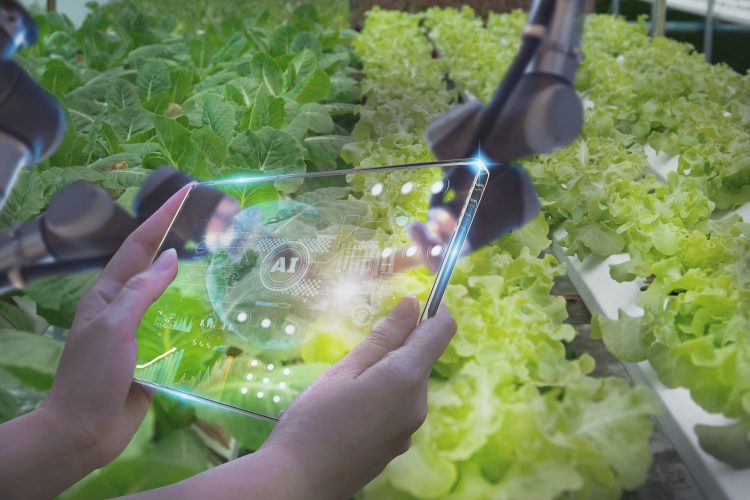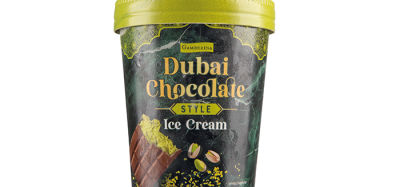Harnessing data and AI to improve food quality and safety
- Like
- Digg
- Del
- Tumblr
- VKontakte
- Buffer
- Love This
- Odnoklassniki
- Meneame
- Blogger
- Amazon
- Yahoo Mail
- Gmail
- AOL
- Newsvine
- HackerNews
- Evernote
- MySpace
- Mail.ru
- Viadeo
- Line
- Comments
- Yummly
- SMS
- Viber
- Telegram
- Subscribe
- Skype
- Facebook Messenger
- Kakao
- LiveJournal
- Yammer
- Edgar
- Fintel
- Mix
- Instapaper
- Copy Link
Posted: 15 January 2024 | Anoek van der Wal | No comments yet
Food safety expert Anoek van der Wal discusses the role AI can play in offering more accurate monitoring, enhancing traceability in supply chains, improving efficiency, and product quality.


By Anoek van der Wal, Food Safety and Quality Head of EMENA and Global Cocoa, ofi
Food safety isn’t just a nice to have; it’s essential to operating legally and safely. Understanding the full supply chain and the food safety risks associated with it will determine the strategy to control and mitigate risks. And it’s something that needs to be monitored closely and carefully, especially as deviations can occur at any point in the supply chain at any time. That makes food safety monitoring systems crucial in managing risk and keeping quality consistent.
But that also takes time. Across the food industry, thousands of hours are spent every year ensuring that the food ingredients created for consumers to enjoy is being produced to the highest standards. Finding more efficient, reliable ways to monitor food safety is top of any manufacturer’s list, especially when speed and efficiency are crucial in keeping production lines running and customers supplied. As global supply chains face numerous pressures, any way to improve productivity and reliability can help the food industry deliver for consumers. That’s where innovation comes in.
Emerging technologies are creating exciting possibilities for food safety. The quicker food quality or safety issues are flagged up, the quicker they can be resolved. New technology can not only help improve the speed and accuracy of food quality monitoring but also enhance the traceability of food supply chains, which are often complex and challenging to navigate. It’s still early days for the industry, but at ofi, we have been testing different approaches.
Take our laboratory testing facility in Koog aan der Zaan in the Netherlands. Previously, we captured measurements from the equipment used to process cocoa ingredients manually, which was relatively time-consuming. By introducing a laboratory information management system (LIMS) where the equipment captures data directly and feeds it into our systems, it removes the need for manual data capture. This means we can collect the measurements we need much more regularly and quickly. We’ve also improved the speed of our analysis by using more infrared equipment technology (NIRs) across many of our cocoa processing sites. Where one measurement previously took 30-45 minutes, it now takes only five minutes. That means we can take more measurements and capture more reliable data as a result.
But the real potential of these technologies lies in what can be achieved if they are scaled. With data captured all in one system, we can perform quicker traceability between the farm and the factory.
Likewise, we are looking to install additional NIRs at our cocoa facilities to complement our existing systems. The more sensors we can install will help us build a better picture of our operations – and in doing so, help improve product quality for our customers.
Increasing the amount of data, we are able to capture across our supply chain also opens up exciting possibilities for AI. As we capture more data, we will also need to be able to process more information in real-time. AI systems will one day be able to do just that, helping us build an even more accurate and powerful food safety system.
Take one example of a common issue that can affect cocoa bean quality: wet weather conditions. If the weather in a cocoa-sourcing country is particularly wet, it can affect the levels of Free Fatty Acids (FFAs) in the final product. In fact, if the FFA levels are too high, the final product will have an unpleasant taste and be unsuitable for use. That’s where AI comes in. In the future, AI tools could help process real-time food quality measurements from our processing facilities across the globe, alongside data on weather conditions at the beans’ origin. This analysis could help us estimate the quality of the finished product and adjust our processing accordingly, ultimately helping us to better plan, predict inconsistencies, reduce waste, and enhance the traceability of our supply chain.
Technology is clearly changing the game in food quality and safety and is creating some exciting possibilities to improve safety and efficiency across the supply chain. As technology improvements allow us to better harness data across our supply chain, we will be able to better monitor and improve food quality from plant to palate. That will not only help improve the speed and accuracy of our operations but also help deliver a higher quality and more consistent product for consumers to enjoy.
About the author


Anoek van der Wal graduated in 1999 from Wageningen University as a Food Technologist. After 15 years in leadership roles in R&D, process technology, and innovation at Mars, she moved into quality and food safety. Anoek spent five years as Mars’ Supplier Quality Director before joining ofi in 2020 as the Head of Quality & Food Safety in the EMENA region and for the Global Cocoa business. In her current role, she aims to align quality and food safety ways of working across the facilities and build a strong quality and food safety culture throughout ofi’s supply chains.
Related topics
Data & Automation, Equipment, Food Safety, Quality analysis & quality control (QA/QC), Research & development, retail, The consumer, Trade & Economy, World Food








